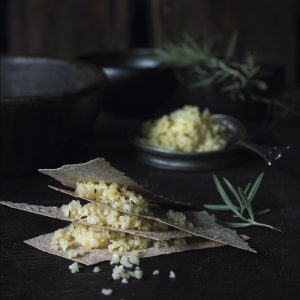This a monthly series which I have been publishing for years. You can subscribe here, to get the latest cheese delivered directly on to your screen.
Anybody with even a fleeting idea of Norwegian cheese history might wonder about the combination of Pultost and Gudbrandsdalen. This long-stretched valley surrounded by high mountains in the southern heart of Norway is commonly associated with brunost. Brunost, literally brown cheese and also known as geitost, goat cheese, is part of the Norwegian identity, just like elk, reindeer and snow.

It’s not really a cheese as such, being made from boiled down, caramelized whey (and tasting like a mix of Marmite and Nutella). It is said that Anne Hov, a Gudbrandsdalen milk maid, “invented” it in 1863. And much more than that: historians have been trying hard to follow its roots back into time immemorial, to justify its identity-establishing role for Norway and Norwegians as such.

Which is all very well. I love good brunost (more about it here, albeit in German) – and besides the fact that before modern marketing departments and concepts etc not much was invented ad hoc – but the historical high table of Norwegian cheese belongs to the triumvirate of skjørost, pultost and gamalost (literally sour, „gruelly“ and old cheese). All three are made of sour skimmed milk without the use of rennet and closely related to alpine ur-cheeses such as Graukäse, Surakees and the equally ancient Germanic family of Harzer-Korb-Quargel, the so-called „hand cheeses“.
For traditional skjørost (also close to Icelandic skyr, not only etymologically!), skimmed milk (with the cream made into erstwhile well-paid butter) is soured, slowly heated, being gently stirred, to 60°C, and then hung and drained in a cloth. After three days it is quite solid and subsequently crushed into small, crumbly pieces, either by hand or with the help of a grinder. Some press this skjørost into some recepticle or mould, similar to Graukäse and leave it to mature, so that it turns hard on the edge and to a translucent yellow inside (if mould is left to develop inside and outside, this turns into gamalost). For pultost, salt and cararaway seeds are added to the fermented, crumbly skjørost on the fourth day. Pultost is especially good on all kinds of bread, with a generous layer of butter or lard, or with lefse, a kind of potato flatbread, or potatoes and sour cream…

Pultost is produced all over Norway. As usual the best distributed versions come from Tine, the giant dairy cooperative, and they are reliable, but not very exciting. On an earlier Norway trip I visited wonderful Rørosmeieriet, where not only pultest, but simply everything tastes exceptional and delicious (cottage cheese! butter!!!). My pultost candidate this time comes from a new favorite producer, Avdem Gardsysteriet in Lesja in Gudbrandsdalen (a valley so verdant and sweet that to early settlers it must have appeared like the promised land).

For Avdem, five families (Åse Haugstad is on the picture)joined forces after the local dairy closed and in 2005 started to work their unpasteurized milk in to all kinds of very good things. Should your travels take you to that (beautiful) region, go taste – like the exceptional hultreost, a new recipe, the old stalwarts gubb and gomme – and visit the extremely well-stocked grocery store, Advemsbua.
So, pultost: quite strong, with a good acidity, simply good – and indeed very historic. Hei hei og fin ost alltid!
This a monthly series which I have been publishing for years. You can subscribe here, to get the latest cheese delivered directly on to your screen.
If you enjoyed reading this, you might consider clicking on the button below and supporting me in my work. I’d be more than happy. Thank you.
